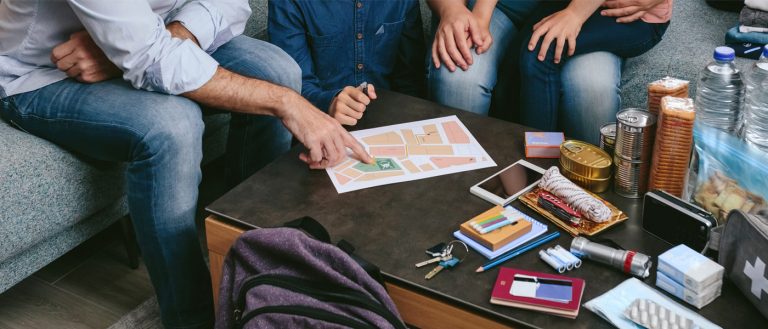National Preparedness Month is recognized each September to promote family and community disaster planning now and throughout the year. As our nation continues to respond to COVID-19, it is a good time to engage in National Preparedness Month.
This month, the Office of Resiliency will provide resources for all members of the Case Western Reserve University community to better prepare for a wide range of emergencies.
This first week of this month will focus on making a plan.
When considering safety, it is important to make a plan, keeping in mind there are a variety of disasters for which it is worth preparing. According to the Federal Emergency Management Agency, the primary disaster types to keep in mind are:
- Active shooter;
- Cyber attack;
- Earthquake;
- Extreme heat;
- Financial emergency;
- Flood;
- Novel pandemic;
- Power outage;
- Thunderstorm;
- Lightning and hail;
- Tornado;
- Wildfire; and
- Winter storm.
Accomplished properly, planning provides a methodical way to engage the whole community in thinking through the lifecycle of a potential crisis, determining required capabilities and establishing a framework for roles and responsibilities. It shapes how a community envisions and shares a desired outcome, selects effective ways to achieve it and communicates expected results. A shared planning community increases the likelihood of integration and synchronization, makes planning cycles more efficient and effective and makes plan maintenance easier.
As you prepare your plan, tailor your plans and supplies to your specific daily living needs and responsibilities. Discuss your needs and responsibilities and how people in the network can assist each other with communication, care of children, business, pets or specific needs like operating medical equipment. Create your own personal network for specific areas where you need assistance. There are some factors to keep in mind when developing your plan.
Discuss important questions with your family and/or roommate(s)
- How will I receive emergency alerts/warnings?
- At both the national and local levels, emergency alerts and warnings may be sent.
- At CWRU, you should sign up to receive Spartan alerts, notifications the university sends out in the event of a widespread emergency. These messages might include emergency notifications for lockdowns, sheltering in place, or fires; severe weather closures or delays; security alerts to make the community aware of crimes that occurred on or near campus but no longer present a risk to the community; and neighborhood safety advisories to raise awareness of activity happening in University Circle, such as increased police activity or non-violent crime at a neighboring institution. Be sure to log in to getrave.com/login/cwru to ensure your mobile number is listed to receive texts.
- What is our shelter plan?
- What is our evacuation route?
- What is our family/household communication plan?
- Do we need to update our emergency preparedness kit?
Add items to your emergency preparedness kit
Having an emergency preparedness kit ensures your family has necessities during an emergency event.Some items can be essential to add to your emergency preparedness kit, and your emergency kit should be updated on average every six months.
Consider COVID-19 in your plan
In relation to the COVID-19 pandemic, consider specific needs in your household and/or residence hall and update your emergency plan with Centers for Disease Control guidance in mind. Think about the following when developing your plans:
- Different ages of members within your household;
- Responsibilities for assisting others;
- Locations frequented;
- Dietary needs;
- Medical needs, including prescriptions and equipment;
- Disabilities or access and functional needs, including devices and equipment;
- Languages spoken;
- Cultural and religious considerations;
- Pets or service animals; and
- Schooling.
Fill out a family emergency communication plan
When you fill out a family emergency communication plan:
- Gather important details, such as contact information for doctors, school and service providers.
- Once this information has been gathered, make sure everyone in the household has a copy of the plan.
- Practice the plan with your household and/or residence hall.
- Walk through various parts of your plan, including meeting at designated indoor and neighborhood meeting places, talking about who will lead the communications in the event of an emergency, and more.
- Make sure you review and revise your plan at least once a year.
Access resources
To help yourself plan for potential emergencies, download Spartan Safe to access a variety of safety tools.
You also can order free preparedness materials from FEMA’s online ordering platform. These materials can be shipped directly to you at no cost. Please allow two to three weeks for delivery. Due to safety precautions put in place to protect employees and customers from COVID-19, you may experience delays.
This is a safe and cost effective way to make sure that you are prepared with meals, incase of an emergency.

